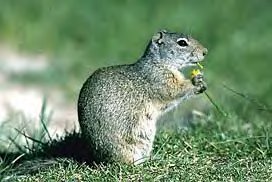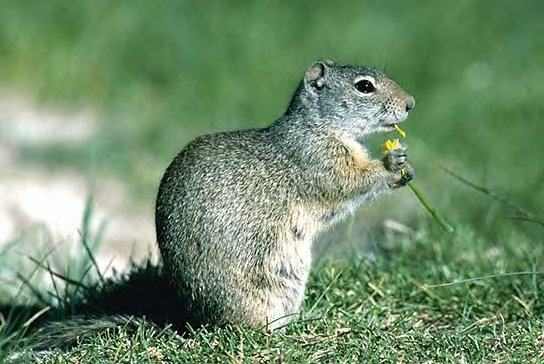Chipmunks, Squirrels, and Prairie Dogs
Description
Brownish to buff above; sides paler; belly buff. Tail buff mixed with black above and below, with pinkish-buff edge. Head, front of face, and ears cinnamon, with grayish dappling on top of head; sides of face and neck gray. Forelegs and forefeet buff; hindlegs cinnamon; hindfeet buff. L 11–11 7/8" (280–303 mm); T 2 1/2–3 1/8" (63–81 mm); HF 1 5/8–1 3/4" (42–46 mm); Wt 10–15 oz (284–425 g).
Similar Species
Richardson’s Ground Squirrel’s tail is clay-colored, buff, or light brownish below. Townsend’s Ground Squirrel usually has shorter tail that is reddish or tawny below. Belding’s Ground Squirrel has brown streak down back.
Breeding
1 litter per year, born in May after 28-day gestation. First-year females bear an average of 4 or 5 young, older females 6 or 7. Young emerge from burrow in 24 days.
Sign
Burrow entrances.
Habitat
Dry sage and sage grass; also lawns.
Range
Southwestern Montana, e Idaho, w Wyoming, and nc Utah.
Discussion
The Uinta Ground Squirrel both estivates (becomes dormant in summer) and hibernates. Adults begin estivation in July, juveniles later; by September, all individuals have disappeared. From estivation, they directly enter the long hibernation. In Utah, adult males emerge first, in late March to mid-April, and remain active only about 3 1/2 months before reentering their sleep cycles. These ground squirrels eat seeds, green vegetation, invertebrates, and some vertebrates. The American Badger appears to be the major predator of this and several other ground squirrels.


